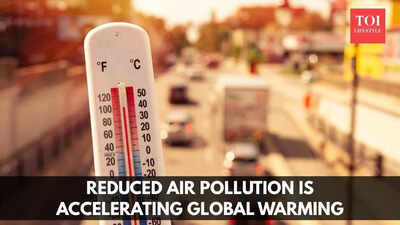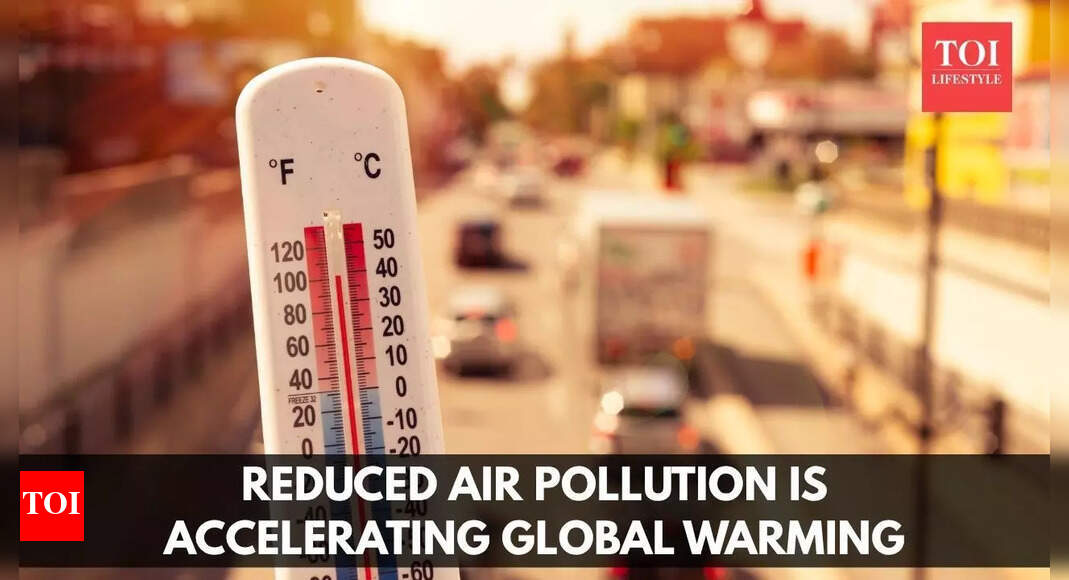 Earth is warming faster than predicted as reduced air pollution has made marine clouds less reflective. A new study reveals that fewer aerosols, once a cooling agent by reflecting sunlight, have led to brighter skies and accelerated global warming. This discovery highlights the complex interplay between pollution reduction and climate change. The Earth is reflecting less sunlight and absorbing more heat than it did several decades ago. As a result, global warming is advancing faster than predicted. Temperatures in 2023 and 2024 have exceeded the projections made by climate scientists.A new study published in Nature Communications has found that the Earth is warming faster due to the reduction in air pollution. You read that right — a reduction in air pollution may have led to cleaner air; however, it has inadvertently diminished the brightness of marine clouds, which are key regulators of global temperature.
Earth is warming faster than predicted as reduced air pollution has made marine clouds less reflective. A new study reveals that fewer aerosols, once a cooling agent by reflecting sunlight, have led to brighter skies and accelerated global warming. This discovery highlights the complex interplay between pollution reduction and climate change. The Earth is reflecting less sunlight and absorbing more heat than it did several decades ago. As a result, global warming is advancing faster than predicted. Temperatures in 2023 and 2024 have exceeded the projections made by climate scientists.A new study published in Nature Communications has found that the Earth is warming faster due to the reduction in air pollution. You read that right — a reduction in air pollution may have led to cleaner air; however, it has inadvertently diminished the brightness of marine clouds, which are key regulators of global temperature.
Earth warming faster than expected
The researchers found that between 2003 and 2022, clouds over the northeastern Pacific and Atlantic Oceans — two areas of rapid surface warming — became nearly 3% less reflective per decade. Approximately 70% of this change is attributed to aerosols, which are fine particles that float through the atmosphere and influence both cloud cover and cloud composition.Aerosols from fossil fuel combustion have long been known to influence climate change. However, as clean energy replaces oil and gas, aerosol levels will fall. Though aerosols are harmful to human health, they have a cooling effect on the planet by reflecting light.“This paper is a substantial contribution to the evidence that reductions in particulate air pollutants are contributing to accelerated warming,” said Sarah Doherty, a principal research scientist at the UW Cooperative Institute for Climate, Ocean and Ecosystem Studies.Scientists were aware that low clouds over the ocean would dissipate as temperatures rose, exposing more surface area to warming sunlight and amplifying its effect. They also knew that particles in the atmosphere insulate the Earth by deflecting light and making entire clouds more reflective.This cooling effect of pollution masked warming from greenhouse gases for decades. As air quality improved, the warming accelerated.“It is clearly a good thing that we have been reducing particle pollution in the atmosphere. We don’t want to go back in time and take away the Clean Air Act,” Doherty said.“Our goal is to understand what is driving current climate changes to estimate how much warming we will see in the future,” she added.
How clean air changed the clouds
Using 20 years of satellite data, the researchers analysed cloud dynamics over the northeastern Pacific and Atlantic Oceans to understand why their reflectivity went down. They found that aerosols influence clouds in two ways.“Small particles give water droplets something to cling to, and with a fixed amount of water, more aerosols mean more small, shiny droplets in the clouds. By the same logic, reducing aerosols increases cloud droplet size. Large droplets are heavier and quicker to fall to Earth as precipitation, which decreases the longevity of clouds, or cloud cover,” the researchers said.“When you cut pollution, you’re losing reflectivity and warming the system by allowing more solar radiation, or sunlight, to reach Earth,” said lead author Knut von Salzen, a UW senior research scientist of atmospheric and climate science.“We may be underestimating warming trends because this connection is stronger than we knew. I think this increases the pressure on everyone to rethink climate mitigation and adaptation, because warming is progressing faster than expected,” von Salzen said.
Can we brighten up the clouds?
The changes in cloud reflectivity are leading to rapid warming on Earth. The researchers are now exploring feasible interventions to make the clouds shinier, without the pollution. One such intervention is known as marine cloud brightening, in which ships spray seawater into the air to make low-lying oceanic clouds more reflective and help minimise warming from the sun.“You could think of it as replacing unhealthy pollutant particles with another type of particle that is not a pollutant — but that still provides a beneficial cooling effect,” said Robert Wood, a UW professor of atmospheric and climate science.

